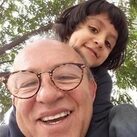- Prices/Payment
- Standard Service US$199.00
- VIP/Rush Service US$299.00
- Statement of Purpose Help
- Dr Robert Edinger, Personal Statement of Purpose Specialist
- Editing/Writing Service
- Mission
- Guarantee/Privacy Policy
- Client Testimony
- Autobiographical
- Disadvantaged Status
- Diversity
- KSA
- Undergrad
- Letters of Recommendation
- Resume /CV
- Interview!
Anonymous Samples of My Work in Art, PHD, MFA, BFA
Search by Degree, Field, or Country of Origin
Sample Statement of Purpose for the MFA
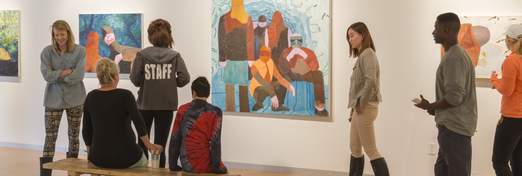 I consider myself to have become a professional artist, at least since 2010. My three most recent solo exhibitions (2017) have been entitled “It’s Wonderful Your Demons Came Today,” “This Too Shall Pass”, and “Internal Dialogue" (2016), this last one at the Lazarides Gallery in London. Through art I seek interaction with the spiritual, leading to re-generation, always with an eye towards engagement with the psychological forces that mold our lives, enhancing our self-understanding and subsequently our ability to shape our own destinies. I have also had an interest in social justice issues, as reflected by the title of my exhibition at the Jonathan Levine Gallery in New York in 2015: “This Land is Not For Sale.” XXXX College is my first choice to earn the MFA because I see it as the epi-center of the New York art world.
I consider myself to have become a professional artist, at least since 2010. My three most recent solo exhibitions (2017) have been entitled “It’s Wonderful Your Demons Came Today,” “This Too Shall Pass”, and “Internal Dialogue" (2016), this last one at the Lazarides Gallery in London. Through art I seek interaction with the spiritual, leading to re-generation, always with an eye towards engagement with the psychological forces that mold our lives, enhancing our self-understanding and subsequently our ability to shape our own destinies. I have also had an interest in social justice issues, as reflected by the title of my exhibition at the Jonathan Levine Gallery in New York in 2015: “This Land is Not For Sale.” XXXX College is my first choice to earn the MFA because I see it as the epi-center of the New York art world.
I have wanted to live in NYC for many years, but always felt I should move there for a reason. I have a lot of close friends in New York and have visited at least once a year for a long time. New York City has always filled me with inspiration and excitement and I have an experience of rebirth each time that I visit. I consider myself a serious artist and feel strongly that NY is now where I need to be. I see XXXX as the leading trailblazer in NY Contemporary Art, and find myself most inspired creative energies at Hunter, on the part of students as well as faculty. It would be a huge honor to study at XXXX under artists such as XXXX XXXX, XXXX XXXX, XXXX XXXX and XXXX XXXX. All four of these artists have been on my radar for quite some time and they are all having conversations that I would love to join.
Born in 1975 in Portsmouth, Virginia, I have now spent much of my adult life in California and currently live and work in Oakland. Earning my BA in Fine Art from the Academy of Arts University in San Francisco, I count it an enormous privilege to have enjoyed a profound and sustained immersion experience in the Bay Area art scene. Nothing compares to it for me – except New York City. I want to stand up as an American artist with one foot in the Bay Area and the other in New York.
While I have made contributions to dozens of group exhibitions, I am especially proud of what I have accomplished over the course of the last couple of years, working with the Jewish Museum of Art in San Francisco (2017) and the National Portrait Galleries of Scotland as well as London (2016). Nevertheless, while successful, I feel as if I have hit a ceiling and I hope being accepted into your MFA Program at XXXX College will help me to reinvigorate my career, build new community ties, and have more rapid growth experiences, teaching at some point and continuing to share my work.
Thank you for considering my application.
The Humanitarian Side of Art
It’s not uncanny for artists like you to seek out ways to help the world. There’s usually something inside artists that makes them want to share their love of art with others, spread the joy. Many artists have also used art to express their emotions onto their canvas, relieving stress, working through trauma and generally having the best time of their lives. Others turn to art to achieve a goal, which then gives them greater confidence when it comes to making their dreams a reality in other areas of their lives.
The good news is that there are a lot of organizations that welcome artists into the world of humanitarian work. Take the United Nations Arts Initiative, for example. The Humanitarian Resource Institute is behind this project, promoting the arts as a vehicle for strategic planning and development all over the world. They connect educators and articles that are innovative and creative to work on strategic planning, critical analysis to engage decision makers and audiences in a specific demographic.
Then there’s Art Works Projects. They provide visual advocacy tools to stimulate action on human rights crises at the grassroots, media and policy level. They work with established humanitarian and human rights advocacy organizations to develop exhibitions, books, films, recordings to expose genocide, extreme sexual violence, human trafficking, and other human rights violations and target the most abusive issues with the least media coverage.
If you thought Doctors Without Borders was cool, what about Art Therapy Without Borders, Inc.? Founded in 2010, they are dedicated to using art to serve others in need.
The Artist Volunteer Center is a nonprofit, artist-driven organization founded on the principle that art is at its most powerful when inspired by the desire to establish a dialogue based around social justice issues. It’s also a support service for artists, fighting for equality in the arts by using long-term projects with community partners.
For some inspiration, Patrick Maxcy is a great example of a humanitarian artist who’s out in the world walking his talk. He uses his art to raise awareness about some of the world’s most pressing needs. He travels with specific organizations to different locations, such as Nicaragua, Uganda and Colorado, where he connects people through stories and artwork.
If you want to get stuck into a Master’s program that can lead you into this fascinating field, studying Art Therapy is one of the more obvious paths. It will turn your artistic career in a humanitarian direction by its very nature. When you do a Masters in Art Therapy, you receive instruction and mentoring to later fill jobs in mental health and health care, as a clinician working with children and adults with a variety of different challenges, such as mental illness, addictions, trauma, etc. These skills all come into great use when dealing with individuals who have just been to hell and back as a result of war, a natural disaster or some other horrific event.
If you’d like to head off and study in Europe, The European Graduate School in Switzerland offers candidates an MA in Expressive Arts, Conflict Transformation and Peacebuilding. During this course, you’ll concentrate on the use of creative methods to address conflicts within teams, communities and across varied cultures. It will provide you with frameworks for using the arts in conflict analysis interventions, trauma awareness and healing, humanitarian responses and research to promote peace. Professional artists, peace workers, art therapists, humanitarian workers and others make great candidates for this course. Course fees in Europe are also refreshingly reasonable.
If human rights is more your thing, the University of Essex, UK, offers students with full and part-time options on their MA in Human Rights and Arts degree. This university ranked 9th nationally for research excellence, and was awarded the Queen’s Anniversary Prize in recognition of its work in advancing human rights globally. This program is perfect for you if you want to promote human rights and expose human rights violations with your artwork.
And if you’re a politics fanatic, you must check out the Art and Politics MA at Goldsmiths, University of London. Here you’ll explore the autonomy and “politicality” of art and its role in times of political and cultural crises. You’ll explore interesting issues like whether political art can trivialize or aestheticize the issues it’s trying to tackle, plus many more.
Inspired to head off and jump into humanitarian work and study? Please let us know if you’d like some assistance with your graduate school admission!
For almost 20 years now, I have been helping applicants to art school, delving deep into the creative process, helping people of all ages, each one with the voice and perspective of their generation working to improve our health and emotional well-being through artistic production.
I find profound spirituality in healing through art, a sort of communion with the divine. Thus, it has always been a special privilege to help an applicant applying to art school, BFA, MFA, or PHD. I always learn something of great value about one of the fields that brings me the greatest joy.
As a patron of the arts throughout my adult life and now an old man, I do all that I can to summon great energy on your behalf in the creative writing of your personal statement of purpose for admission to a BFA or MFA Program. By helping you I am able to make an important contribution to the common good, especially through the promotion of art therapy services to the public; facilitating communication among members and colleagues; supporting state and federal legislative efforts that impact art therapy; helping to disseminate information to the general public; and, recognizing excellence in art therapy, in particular, and promoting clinical, professional, educational, and research efforts.
It is a special honor for me to help you; together, we are building tomorrow by helping you to get accepted, based on an eloquent explanation of your long term plans concerning your contribution to humanity as an artist. After you fill out my Online Interview Form, I will ask you some specific questions by email if I need any further information. Please also send your resume/CV and or rough draft if you have one.
Art reflects our life, our celebration, deepest fears, and greatest hopes. As someone who has followed the arts throughout my life, I especially enjoy helping applicants who go on to fill leadership positions in the arts and arts education, enhancing the quality of and access to arts education for our nation’s young people. Arts education, in particular, plays a pivotal role in helping youth to develop skills necessary for the 21st century workforce--creativity, collaboration and communication, as well as helping the nation improve high school graduation rates, counter the achievement gap in urban and rural communities, and respond to innovations in technology that may transform how and what young people learn.
I have helped to support projects that provide opportunities for youth, educators, and community leaders to gain in-depth arts education knowledge and skills in the arts. I am particularly interested in projects that have significant potential to be shared and/or replicated, or are likely to lead to innovation in arts learning, instruction, and assessment.
Sample 1st 2 Paragraphs, PHD Art Therapy, Healing Wounds, Recovery
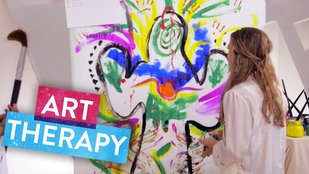 I earned my undergraduate degree in Studio Art and Art History because Art has always been at the center of my world. It has long been my foremost form of personal expression. By earning my PHD in Art Therapy at XXXX University, I will be inspired and empowered to help others to not only express themselves through art but to heal their wounds and surmount their challenges through artistic creation and sharing. I hope to put to good use many of the valuable things that I have learned as an artist, applying them to the cause of healing and recovery for those who have been touched by tragedy and loss.
I earned my undergraduate degree in Studio Art and Art History because Art has always been at the center of my world. It has long been my foremost form of personal expression. By earning my PHD in Art Therapy at XXXX University, I will be inspired and empowered to help others to not only express themselves through art but to heal their wounds and surmount their challenges through artistic creation and sharing. I hope to put to good use many of the valuable things that I have learned as an artist, applying them to the cause of healing and recovery for those who have been touched by tragedy and loss.
My own art was mostly unfettered joy and celebration until my first year of college, when my best friend died in a car crash. I also lost a close family member to cancer in that same period as well as two other close friends who suffered freak accidents during my undergraduate years, helping me to better appreciate the beauty and especially the fragility of life. This opened up new doors to me for artistic expression as an exercise in overcoming grief. Now, I want to learn how to harness the full power of art as healing by earning my doctoral degree in Art Therapy at XXXX University.
Heroines of Art
Tracey Rose
This South African artist’s work focuses on cultural stereotypes imposed on Africans, women and African women through performance, photography, video and installation. Tracey’s body is often at the center of her art, in which she’s usually making biting statements about sexuality and femininity, dogma and the flaws in institutionalized cultural discourse or the politics of identity.
Tracey’s work has been displayed in many different places, both as part of solo and group exhibitions, including at Espace doual’art in Douala in 2009, and at locations in Germany, France, Sweden, Italy, USA, New York City, Los Angeles and Johannesburg. She has participated in a number of international events to include the Venice Biennale.
Julie Mehretu
A key African artist of her generation, Ethiopian-born Julie Mehretu’s large-scale paintings are growing in popularity the world over. Julie draws inspiration from aerial mapping and architecture and represent accelerated urban growth, densely-populated city environments and contemporary social networks. She is best known for her densely layered abstract paintings and prints with an underlying calligraphic complexity, and now works in New York City, where she works alongside her artist partner, Jessica Rankin. She describes her work as “story maps of no location.”
In 2000, Julie was awarded a grant from the Foundation for Contemporary Arts Grants to Artists Award, and won the 2001 Penny McCall Award. In 2005, she was one of the recipients of the MacArthur Fellowship, and in 2013, she was awarded the Barnett and Annalee Newman Award. In 2015, Julie received the US Department of State Medal of Arts from Secretary of State John Kerry.
Wangechi Mutu
Wangechi was born in Kenya but spent her undergraduate career in Wales, before immigrating to the United States, where she received an MFA from Yale.
A sculptor and artist, she now lives and works in Brooklyn, New York, and is considered one of the most important contemporary African artists in recent years. Her work revolves around addressing post-colonial issues and how the West views her native country in an oversimplified manner. Wangechi’s photomontages incorporate ink, acrylic, glitter and pearls as well as images from magazines, including pornographic magazines.
In 2013, Wangechi was awarded the BlackStar Film Festival Audience Award for Favorite Experimental Film in Philadelphia, PA and the Brooklyn Museum Artist of the Year award. Her work is included in the collections of The Whitney Museum of American Art, New York; the Museum of Contemporary Art, Los Angeles and Tate Modern in London.
Premium Statement Service by Dr. Robert Edinger
With maximum creativity, research as indicated, priority attention, and as many drafts as needed,
Dr Robert Edinger with Son David
drrobertedinger@gmail.com
1-812-675-4937
Statements of Excellence in Art
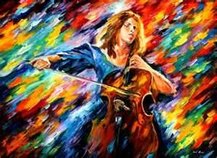
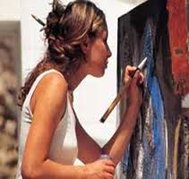
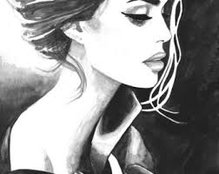
Most Recently Edited Samples
- Real Estate Finance Master's Degree, Hong Kong, China
- MS, Chinese, Statistics for Technological Advancement
- MS Construction Mgmt, Indian Applicant
- Graphic Design Master's, Art History Background
- PHD Health Sciences Informatics, Chinese
- PHD Economics, Policy Analysis, Chinese
- PHD Earth Sciences, Petroleum Engineering Nigeria
- Master’s Real Estate Development, Latino, Mexico
- Doctor of Special Education, Autism Spectrum
- Masters Real Estate, Los Angeles, Indian
- MS Real Estate, NYC, Harlem, African-American
- Master’s Statistics, Chinese Woman
- Master’s Global Business Journalism, Korean
- Undergraduate, Physics, Chinese
- Diversity Statement, Grad School, Hong Kong

